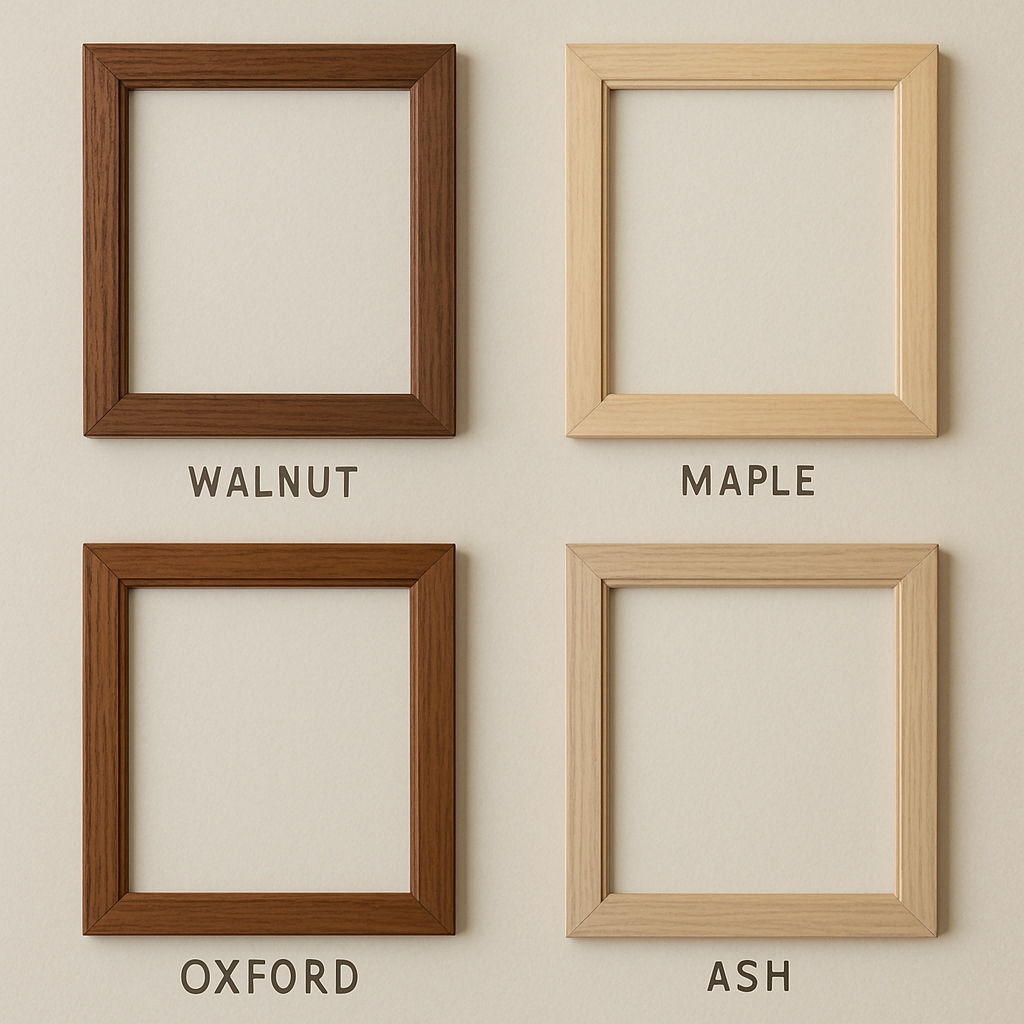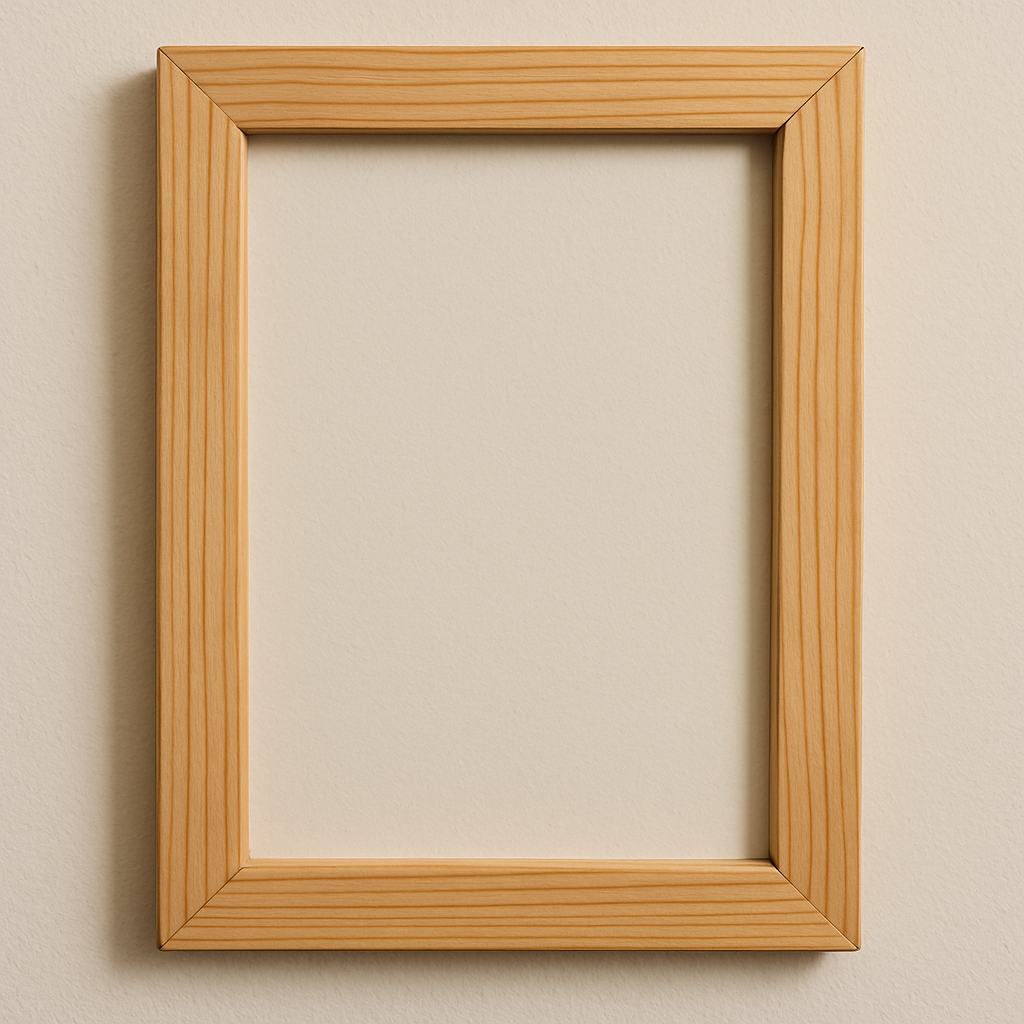Choosing the Best Wood for Framing
When it comes to picture frames, the type of wood you choose can make a big difference in both the appearance and durability of the frame. Whether you're a professional framer or a DIY enthusiast, selecting the right wood is crucial to ensure your frames not only look great but also stand the test of time.
In this article, we'll explore various types of wood used for picture framing, discuss their properties, and help you decide which is the
Understanding Wood Properties
Before diving into specific types of wood, it's important to understand some basic properties that affect wood's suitability for picture framing.
Durability
Durability refers to the wood's ability to withstand wear, tear, and environmental conditions without deteriorating. Some woods are naturally more durable than others, making them better suited for long-lasting frames.
Workability
Workability is the ease with which wood can be cut, shaped, and finished. Woods that are easy to work with are preferable for picture framing, especially for intricate designs.
Aesthetic Appeal
The grain pattern, color, and texture of the wood contribute to its aesthetic appeal. The right choice of wood can enhance the visual impact of your frame, complementing the artwork it holds.
Cost
Cost is always a factor to consider. While some woods may offer exceptional beauty and durability, they may also come with a higher price tag.
Popular Wood Choices for Picture Frames
Now that we understand the key properties to consider, let's take a closer look at some popular types of wood used for picture frames.
Pine Picture Frames
Pine is a softwood known for its versatility and affordability. It's a popular choice for picture frames due to its light color and straight grain, which can be stained or painted to match any decor.
Advantages of Pine
Affordability: Pine is one of the most cost-effective options available.
Workability: It is easy to cut and shape, making it ideal for DIY projects.
Customizable: Its light color takes stains and paints well, allowing for a wide range of finishes.
Disadvantages of Pine
Softness: Being a softwood, pine is more prone to dents and scratches.
Less Durability: It may not be as long-lasting as hardwoods.
Oak Picture Frames
Oak is a hardwood known for its strength and durability. It has a prominent grain pattern that can add a touch of elegance to picture frames.
Advantages of Oak
Durability: Oak is highly durable and resistant to wear and tear.
Aesthetic Appeal: The distinct grain pattern adds character and sophistication.
Strength: It can support larger frames without warping.
Disadvantages of Oak
Cost: Oak tends to be more expensive than softwoods like pine.
Weight: It's heavier, which may not be ideal for all framing applications.
Maple Picture Frames
Maple is another hardwood favored for its smooth grain and light color. It's a popular choice for modern and minimalist designs.
Advantages of Maple
Smooth Finish: Maple's fine grain allows for a very smooth finish.
Durability: It is strong and resistant to impact.
Versatility: Its neutral color complements various styles of artwork.
Disadvantages of Maple
Cost: Like oak, maple is more expensive than many softwoods.
Workability: It can be more challenging to work with due to its hardness.

Cherry Picture Frames
Cherry wood is prized for its rich, warm tones and beautiful grain patterns. It's a favorite among woodworkers for its natural beauty.
Advantages of Cherry
Aesthetic Appeal: Cherry's rich color and grain add warmth and elegance.
Aging: It darkens beautifully with age, enhancing its appeal over time.
Workability: Relatively easy to work with compared to other hardwoods.
Disadvantages of Cherry
Cost: Cherry is often more expensive than other woods.
Color Variation: Color can vary significantly, requiring careful selection for consistency.
Choosing the Right Wood for Your Frame
When choosing the best wood for your picture frame, consider the following factors:
Purpose and Location: Will the frame be in a high-traffic area or exposed to sunlight? Choose a durable wood for such conditions.
Style and Aesthetics: Consider the artwork and the room's decor. Match the wood's color and grain to the overall theme.
Budget: Determine how much you're willing to spend. Balance cost with the desired appearance and durability.
DIY or Professional: If you're making the frame yourself, select a wood that's easy to work with.
Conclusion
Selecting the right wood for your picture frame is a crucial decision that affects both the look and longevity of your frame. While pine offers affordability and versatility, hardwoods like oak, maple, and cherry provide durability and elegance. By understanding the properties and characteristics of each type of wood, you can make an informed decision that enhances your artwork and suits your needs.
Whether you're framing a family photo or a fine piece of art, the right wood can transform your frame into a timeless piece that you'll cherish for years to come.



